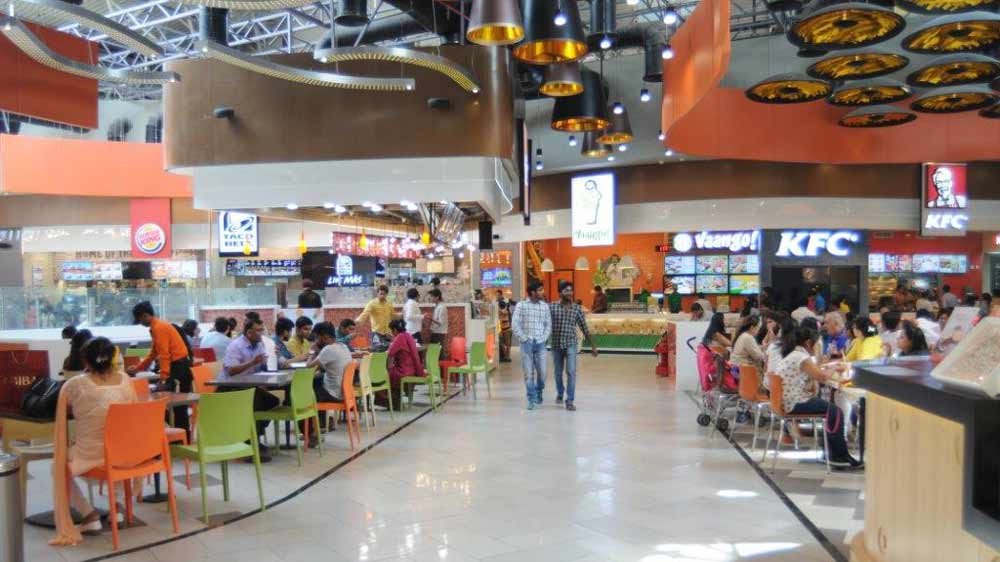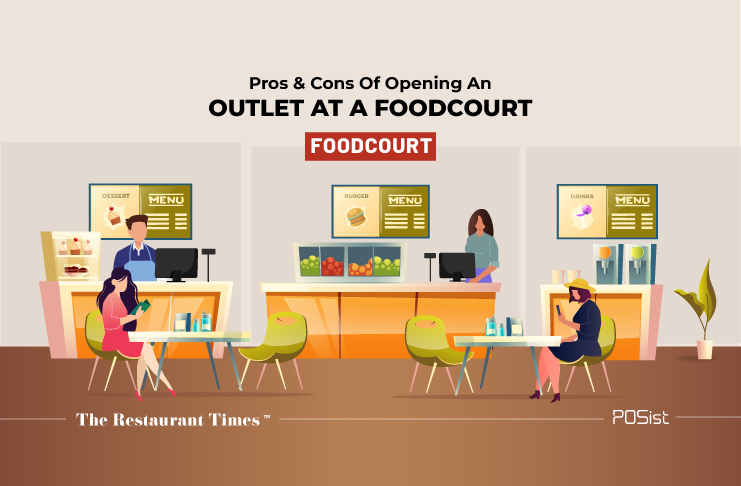Offering ample space to multiple restaurant formats, food courts have become an integral part of the food and beverage industry. These large spaces are a convenient destination for office goers, shoppers, travelers, etc. offering them a multitude of food and beverage options. Located in shopping malls, airports or standalone developments, food courts are popular amongst the younger crowds. Typically, the cost of food court space in India ranges between INR 15000-25000 per sq. Ft. Food courts that have at least 13-15 kiosks and food counters have better visibility. Changing customer interests and the need to combat the overgrowing competition in the standalone restaurant business has been one of the most significant factors for restaurant businesses entering the food court space. While there are many benefits of taking your restaurant business to the food courts, there are many drawbacks as well.
Pros And Cons Of Opening A Restaurant Outlet In Food Court
Here are the pros and cons of opening a restaurant outlet in a food court that will help you in making an informed decision of whether your restaurant should operate from a food court.
Advantages Of Opening A Restaurant Outlet In Food Court
More customers: According to a report from JLL 40% of consumers, today pick a mall or shopping center to visit primarily based on restaurants located there. Food courts are convenient for customers as they offer a wide variety of food options at moderate prices. They mostly dot the mall space that attracts a massive number of visitors. Besides, food courts are spacious and equipped with entertainment avenues. They offer a lively atmosphere even during the slow days and form an integral part of the lifestyle of urban crowds nowadays.
Low Operating Cost: Menus of restaurants in food courts are generally smaller, and operating costs are lower. Opening a restaurant outlet in a food court requires less upfront capital. The maintenance cost of the rented space is shared equally amongst all the restaurants operating in the same area. The costs involved in opening a restaurant in the food court are lower than brick-and-mortar restaurants. As the dine-in spaces are taken care of by the food court operators, there are no costs involved in setting up the ambiance of the restaurant or spending vast amounts of money on infrastructure. Moreover renting space in a food court is more affordable than renting physical restaurant space, mainly in the prime areas.
Exposure: Without any additional marketing efforts, food courts engage and attract customers who are already present in the retail spaces. They can be one of the best platforms to provide incredible exposure to restaurants. If you are unsure about entering into the standalone restaurant business but have an ardent desire to test your restaurant concept, food courts are the safer platforms to look for. Food courts provide a proper scope for restaurants with a physical storefront to expand their customer base by entering in the shared retail spaces. It is also an excellent platform for standalone restaurants with low-profit margins for captivating heavy footfall and boosting overall sales.
Lower Labor Costs: As the space provided to each restaurant brand in the food courts is generally smaller than the standalone restaurants, the requirement of staff is also less. Self-service in the food court reduces the manpower requirement for operators. With no servers and minimal interaction, service in the food court only requires swift order management and faster delivery. When compared to a full-service restaurant, the number of staff in a food court restaurant reduces to only the ones taking the orders and preparing the food items. Operating a restaurant in the food court significantly optimizes staff management and reduces labor costs.

Disadvantages Of Opening A Restaurant Outlet In Food Court
No Scope For Personalization: Ambiance plays an integral role in making the customer’s experience with the restaurant unique. However, food courts limit the scope of showcasing your visual brand leaving hardly any space for personalization. Many restaurants that are quite particular about providing an experiential dine-in to their customers may feel that the overall atmosphere of the food court doesn’t align well with the restaurant brand. Fixed Seating Arrangements, enclosed spaces, and the inability to satisfy the customers with exceptional services and ambiance further dilutes the brand’s appeal.
Stiff Competition: Sharing a common space with dozens of restaurants results in more competition. Businesses serving the same audience a variety of similar products may be in constant fear of cannibalizing their businesses, due to competitors’ presence. Customers have a variety of options to choose from, and they might choose a different brand based on either the product or the value pricing. This significantly impacts the overall sales of a restaurant in the same space where other restaurants are catering to the same customers. The restaurants serving exclusive food options also need to cope by adapting to the latest trends, evolving customer tastes, and offering value-based pricing in order to stand out and shut the competition.
Low Volume: The volume of business for most of the restaurants operating in food courts is lower. Even the most supreme location of a food court might not be capable of generating more volume than a successful standalone restaurant would. The profit margins in food courts are higher due to low operating costs, but there are possibilities that your restaurant business would get overlooked. However, it also depends on the goals you have for your restaurant business and the risk-to-reward calculations you are prepared for.
Though it has been observed that food court spaces are attracting more restaurants, but opening a restaurant in a food court entirely depends on your bottom line. Moreover, opening a restaurant in the food court would make more sense if it can generate profits for your restaurant business. But before you decide to take your restaurant business to the food courts, consider these benefits and drawbacks of opening a restaurant in a food court.

















